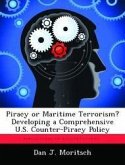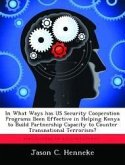This study examines the use of military force as part of a proactive campaign to counter international terrorism. The study includes an examination of the threat from international terrorism as it has grown from 1968 to the present day. Initiatives by the international community to confront terrorism are reviewed to provide a framework for investigating U.S. counter-terrorist policy. Primary emphasis is placed on actions by the United Nations in this review of international initiatives. The major portion of the thesis focuses on the development of U.S. counter-terrorist policy and the role of military force in that strategy. The study begins with the Nixon Administration. The review of national policy follows two tracks; the development of a government organization to deal with the problem and the evolution of the policy itself. With U.S. policy outlined, the study reviews possible options for overt military operations as part of a proactive campaign against international terrorism. The author found that the threat from international terrorism has increased significantly over the past 15 years. More importantly, state sponsorship has emerged as the most significant threat development since 1980. Actions by the international community, specifically the United Nations, have not successfully met the challenge. Further, U.S. policy and organizational development has been marginally effective. Despite this, U.S. policy advocates the use of military force in proactive strikes against terrorism. The study shows that U.S. policy and organizations must be updated to meet the growth and changing nature of the threat. Military force, to include proactive operations, should be included in this update as an option for U.S. leaders. However, the military option will be applicable in only a few cases. The decision to employ military force must be made very carefully. The execution of that option must then be conducted with clear objectives and under tight control.








